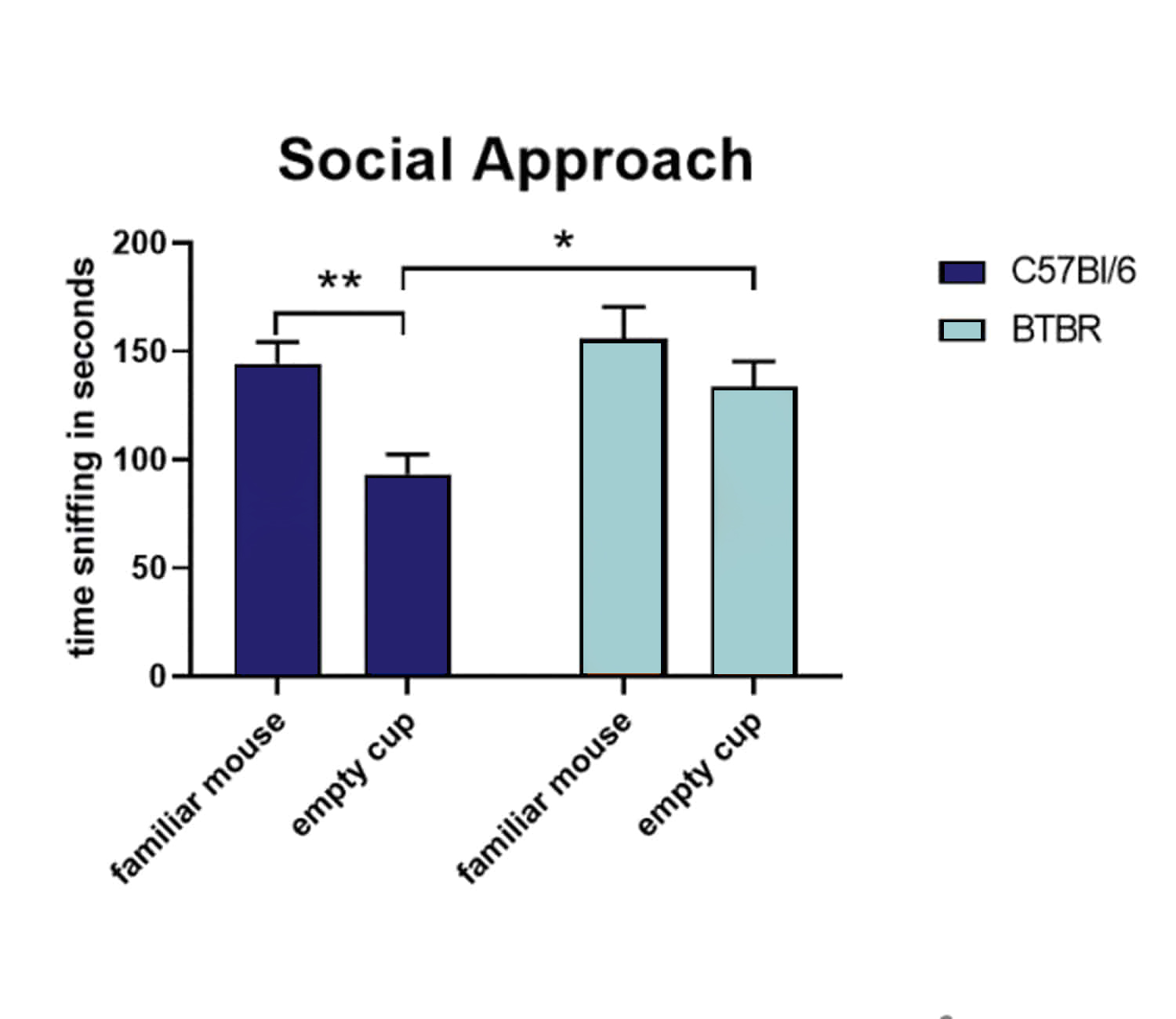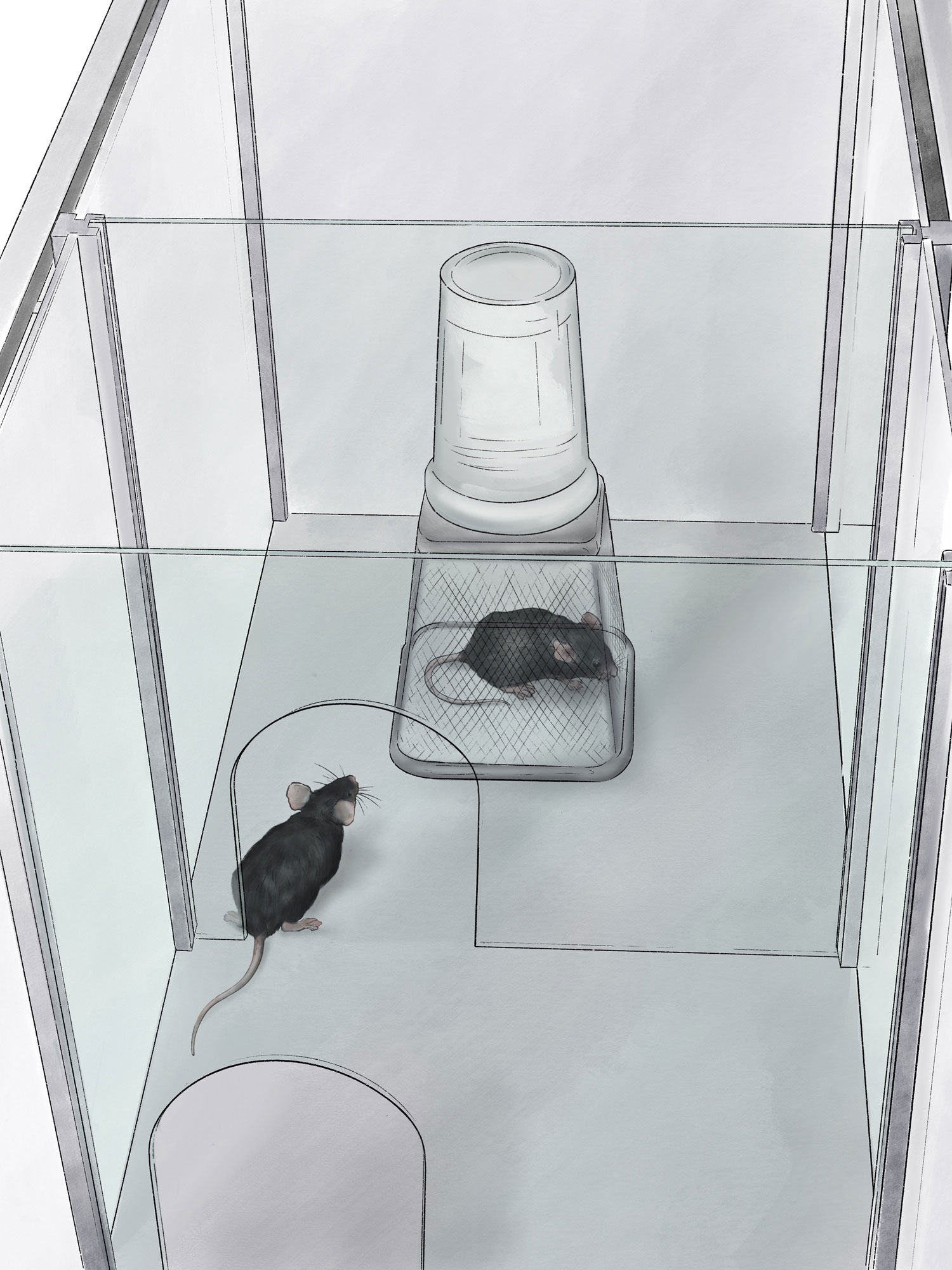The three chamber social test analyzes social deficits and social recognition in rodents. The test uses the natural social behavior of rodents to prefer company over being alone.
The test apparatus consists of three chambers that are inter-connected. Social approach and social recognition can be measured.
Social Approach: A mouse is placed under a wire cage in the left chamber of the test apparatus. An empty wire cage is placed in the right chamber. The test animal is placed in the middle chamber and it is measured, how long the test mouse spends in each chamber or sniffs at each wire cage. The test is videotaped for 10 minutes. Animals can smell, see and hear each other but direct body contact is not possible. Healthy animals will explore each chamber, but will spend most of the time with the conspecific while socially disturbed mice will spend less time with the conspecific.
Social Recognition: After the social approach test, mice are immediately tested for social recognition. Therefore, the already known mouse stays in the left chamber and a new mouse is placed under the wire cage in the right chamber. The test mouse is again placed in the middle chamber and it is for 10 minutes measured how much time the animal spends in each chamber and spends sniffing at the already known or new mouse. Healthy mice will spend more time with the new conspecific due to novelty. Socially disturbed mice might not recognize the already known conspecific and spend therefore similar times in each chamber or the middle chamber.


Three chamber social interaction test of BTBR mice. Time spent sniffing in seconds at the unfamiliar mouse or the empty cup during social approach. BTBR: n = 15; ntg: ns = 14 (males only). Mean + SEM. t-test. *p<0.05; **p<0.01.
